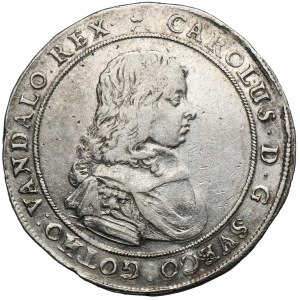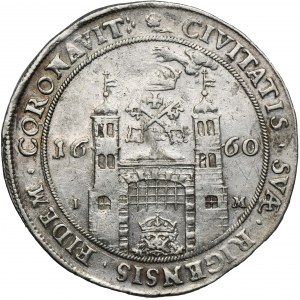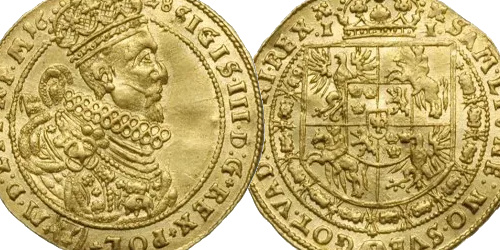The only Riga thaler of Charles XI available on the collector's market. It was minted to manifest the formal takeover of Riga by the Swedes. Since 1621, Riga had been in the hands of the Swedish kingdom only de facto. Only with the Peace of Oliva in 1660 did the city become part of Sweden de jure. The propaganda message of the coin clearly emphasizes this event, both in the iconographic layer and in the inscriptions (CIVITATIS SVAE RIGENSIS).
The obverse features an artistically very successful, subdued and restrained portrait of King Charles XI - without a crown, wearing armor and a cloak cinched at the shoulder with a brooch. The otolithic inscription reads as follows: CAROLUS D G SVECO GOTHO VANDALO REX. The aforementioned propaganda message and manifestation of the Swedish takeover of Riga can be seen on the reverse. Above the striking coat of arms of Riga is the crown of the Kingdom of Sweden. It is superimposed on the city's coat of arms by a hand emerging from the heavens - as if God himself was handing Riga over to Sweden. Lest there be any doubt, this is confirmed by the inscription: CIVITATIS SVAE RIGENSIS FIDEM CORONAVIT. On the sides of the coat of arms are placed the initials I - M of Joachim Meinecke, administrator of the Riga mint.
A correct, healthy piece with mint luster pieces.
The 1660 Riga thaler of Charles XI is a magnificent, striking and at the same time very rare coin. Over the past 30 years it has been present at auctions in Poland only a few times.
Obverse: bust in armor to the right
CAROLUS D G SVECO GOTHO VANDALO REX
Reverse: coat of arms of the city of Riga, castle gate with double pennants on towers, under crossed keys and a cross, above it a hand of clouds holding a crown, under the lattice in the gate a crowned lion's head, on the sides the year 16-60 and the initials I-M mincmistrz Joachim Meinecke
CIVITATIS SVAE REGULATIONS FIDEM CORONAVIT
Diameter 45 mm, weight 27.87 g









